A “minute of angle” is a technical term used to describe how far from the point of aim a bullet deviates after being fired, but it can be boiled down to landing your shots within a 1 inch circle. This 1 inch circle at 100 yards is the gold standard for “accurate” rifles, and firearms that can perform this feat are highly prized. Weatherby produces a modified version of their Vanguard line of firearms branded as “SUB-MOA” that claim to be able to accomplish this feat straight out of the box. Naturally we couldn’t let them get away with making untested claims, so they sent us one for testing.
The Vanguard series of Weatherby rifles are the “value” priced firearms, designed to be cheap to pick up while still maintaining their accuracy. I reviewed a Weatherby Vanguard Carbine not too long ago that goes over the strengths and weaknesses of the firearm, and before you go any deeper into this review I suggest you skim that other review. And if you’re on the fence as to reading it the opening line of the next paragraph should convince you.
The Weatherby Vanguard Sub-MOA is nothing more than a standard Weatherby Vanguard rifle with some extra bells and whistles. Everything about the action is identical to the Vanguard Carbine, from the “meh” trigger to the look and feel of the bolt and safety. So if you were buying one of these with the hopes of a better trigger than the “cheap” version you’re out of luck. The only difference between the standard Vanguard series and this one is the stock and the barrel.
Instead of a thin and weight saving barrel the Sub-MOA uses a full thickness 24 inch target profile barrel that barely tapers from the chamber to the muzzle, ending in a precision machined target crown. Heavier barrels means less movement between shots and increased accuracy — in theory, at least.
The other nice thing about the Sub-MOA line is that the stocks allow the barrel to freely float, much unlike the standard Vanguard stock (which is terrible, by the way). This particular rifle is the “TRR” or “Threat Response Rifle” from Weatherby and sports a sleek black fiberglass composite stock which is much more comfortable than the standard plastic stock. It’s still not perfect — the cheek weld still puts your eye just at the top of the barrel — but it’s better than the cheaper rifles.
Pretty features are nice to have, but the real test of this rifle is whether it lives up to its Sub-MOA designation. Weatherby claims the rifle will maintain a sub-MOA 3-round group at 100 yards using factory match ammunition from a cold barrel, so we went out to the Clark Brothers range in Warrenton, VA this past weekend with some Hornaday 165gr SPBT Match ammunition to put the rifle through its paces.
The following target was perforated by loading each round individually, taking careful aim, firing, and then repeating the process immediately. Only enough time to reload and re-sight the rifle was permitted between shots so the rifle was not given the opportunity to fully cool off.
The results were exactly as predicted. The innermost black circle is exactly one MoA at 100 yards, and as you can see the first three rounds landed squarely almost on top of each other. From there things went slightly south — round #4 just barely broke the circle on the top left, then #5 decided to creep farther away and round #6 looks to be making a break for it.
For comparison, this is the first three rounds out of my Weatherby Carbine that same day shot in the exact same manner with my “hunting loads” at 100 yards. The first round is more or less on target (top center), and round #2 is close enough (bottom right), but round #3 is starting to escape. If I sat there and waited for the barrel to completely cool off I could eke out a sub-MOA group, but that takes time.
So what’s the verdict? The rifle definitely lives up to its Sub-MOA moniker, but I don’t know if it’s worth it. The heavier barrel does allow you to fire faster while still maintaining accuracy, but it comes at the cost of added weight and almost double the price of the standard Weatherby Vanguard.
Weatherby is coming out with a new line of Vanguard rifles in 2012 that fix all of the issues I have with these guns and guarantee sub-MOA accuracy from every rifle in the line, thus removing the line between their “cheap” Vanguard series and the sub-MOA series. The rifles will be more expensive ($600ish), but that’s a price point that seems more in line with what the rifles are worth. In short, if you’re thinking of buying one of these brand new from the factory I’d say wait on it until the new line becomes available. But if you’re getting a rocking deal on a used one jump all over that puppy.
Weatherby Vanguard TRR Sub-MOA
Specifications
Caliber: .308 Winchester (7.62×51 NATO)
Barrel: 24″, 1:12 twist
Operation: Bolt action
Finish: Glossy blue
(Rifle DOES NOT come with bipod, scope or mounts)
Capacity: 5 rounds
MSRP: $1,019
Ratings (Out of Five Stars)
All ratings are relative to other similar products. Overall rating is not mathematically derived from the constituent ratings.
Accuracy: * * * * *
Definitely deserving of the Sub-MOA branding on the floorplate, this rifle maintains less than 1 inch 3-round groups at 100 yards with no problem. 4+ round groups tend to start being an issue unless you take your time with each shot and give the rifle time to cool off.
Ergonomics: * * * *
It’s better than the standard Vanguard series, but still not perfect.
Ergonomics Firing: * * *
Everything feels right with the recoil, but the trigger leaves a little to be desired. Not a lot, mind you, but it can still be improved. This rating is lower than the one I gave for the Vanguard Carbine because I expect a better trigger on a rifle like this.
Reliability: * * * * *
There aren’t many things to go wrong with a bolt action.
Customization: * * * * *
Swivel studs are nice and in place, there are TONS of aftermarket stocks, and the receiver is drilled for scope mounts.
Overall Rating: * * *
It’s a fine rifle, but for my money I think I’d rather get a standard Vanguard rifle and work on improving that. Which I did, and turned out fantastic. Like I said, the rating is based on a comparison of this rifle to comparable rifles. And compared to the competition there isn’t enough to this rifle to justify the price tag.

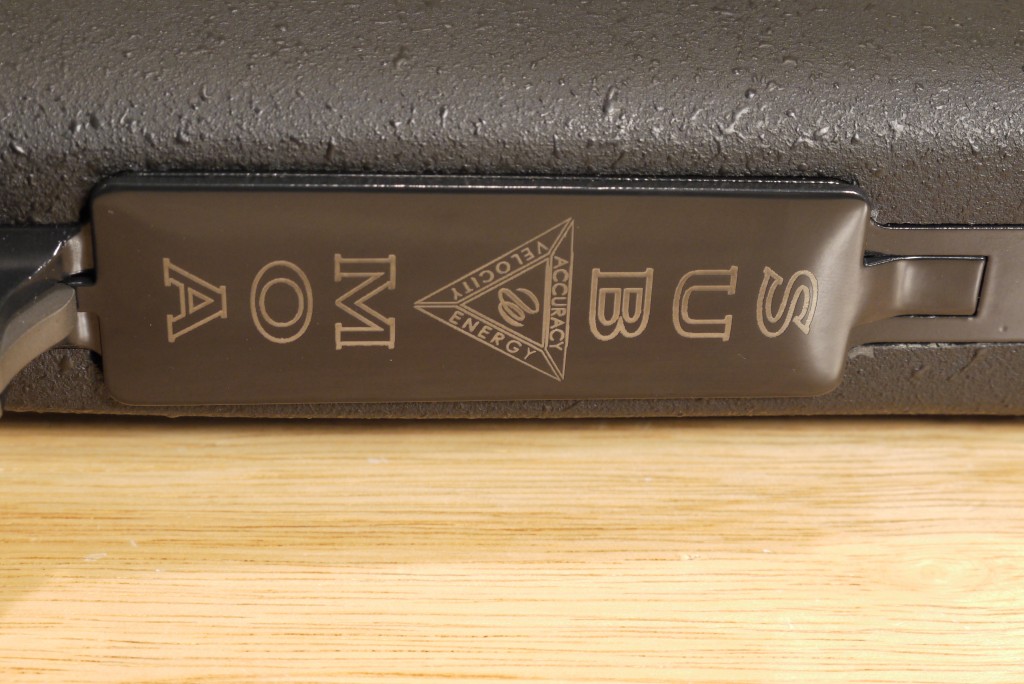
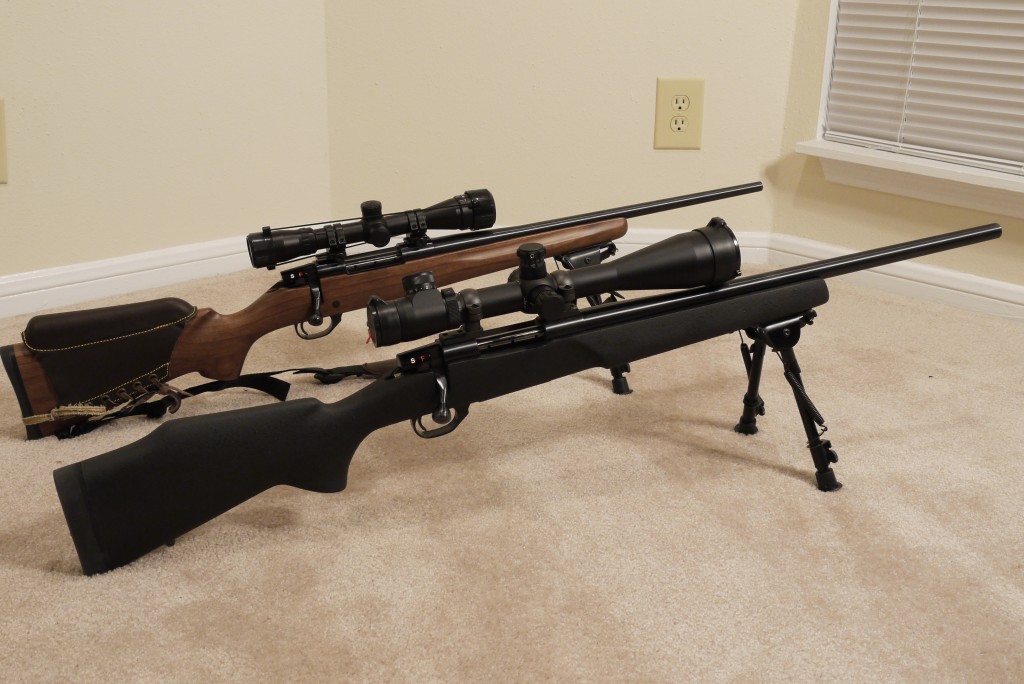

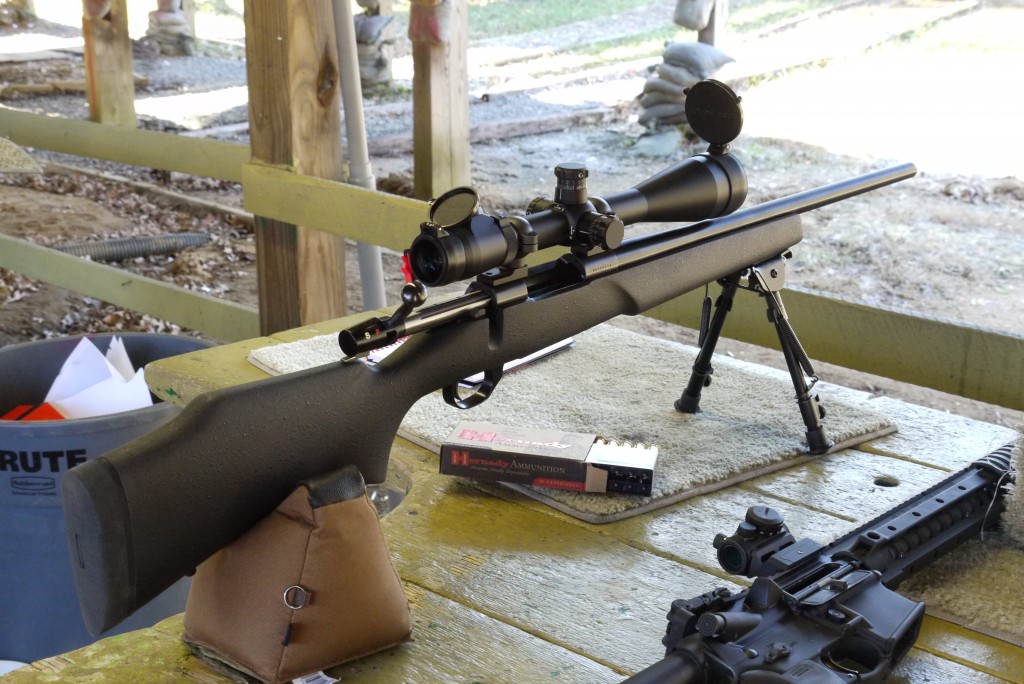

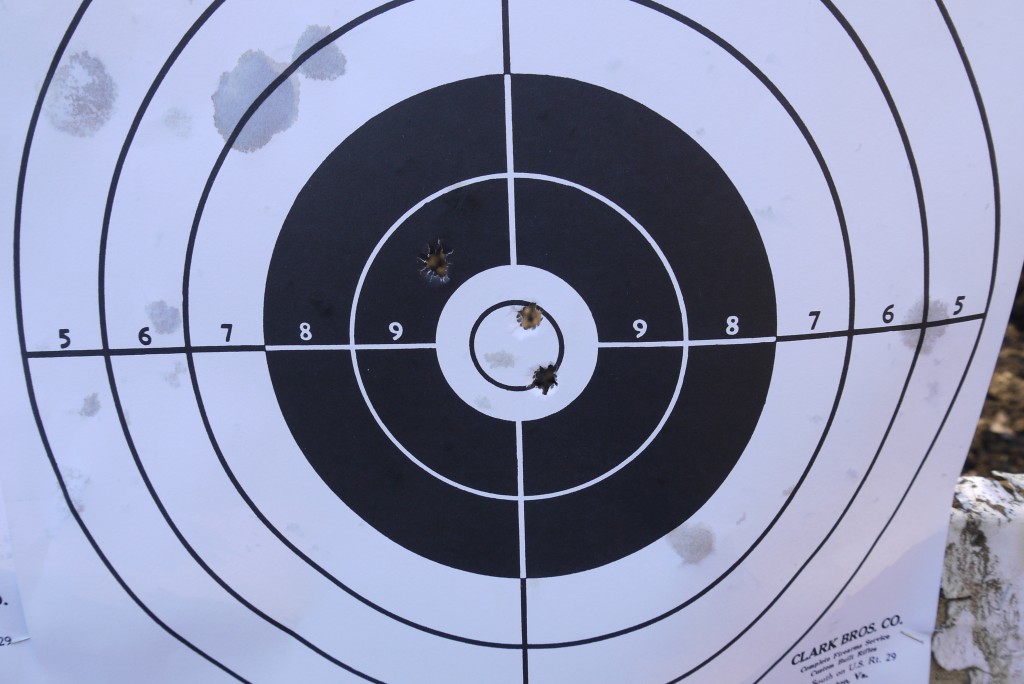


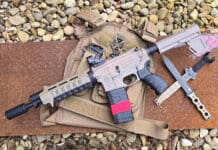
It did what was advertised at a cheap price. You dont get anybetter rifle for the money than the Vanguard series. If you want more fit and finish throw down the cash for a Mark 5. The Weatherby accuracy guarante says that its premium or weatherby ammo fired from a cold barrel.
i bought mine with timney trigger , factory muzzle break , bell and carlson stock professionally bedded. 600.0
i figured i got a good deal so i bought talley rings on a vx2 4×12 . 300wsm shot clover leaf then doe though heart at 352 yards. . guy i got it from was from 75 miles within arctic circle he said it wasnt accurate enough. you guys are smart ill give you 75 each for your guns. oh the doe was droped last day of season… my buddy isnt a marine sniper just a texas hunter and he had never shot the gun befor ,,, he likes it.
Nice write-up Nick, however I don’t think that this rifle deserves the “sub-MOA” nameplate bestowed upon it by Weatherby (although it does appear to be a good shooter). I don’t know when we (not TTAG, but manufacturers and shooters in general) suddenly switched to 3-shot groups for testing, but I certainly understand why. Everyone loves to show off those pretty “cloverleaves” to their friends and brag about the “bargain” sub-MOA shooter they have in the safe.
I recall reading an old article in Outdoor Life when I was a kid that talked about grouping and how to determine what your rifle grouping to be. The author suggested the following load count for grouping determination: magnum loads-5 shots, sporter barrel non-magnum 7-shots, and varmint/heavy barrel-10 shots. I have seen similar load counts in other magazines and through discussions when talking to precision rifle makers/gunsmiths.
If you think about 3-shot vs. 5/7/10-shot groupings in statistical terms, another obvious reason for shooting 3-shot groups comes up. I was once taught that if a 3-shot group equals exactly 1″, then one can extrapolate a 5-shot group to equal 1.67″ (5/3=1.6667 x 1″ = 1.67″) and the gun no longer is a “1-MOA shooters”. A 7-shot group opens up to 2.33″ (7/3) and a 10-shot group equates to a 3.33″ grouping. Using 3-shot groups only, you would need 5 sets of groups to statistically equal a single 5-shot group. Someone who has had a statistics course more recently than I could probably explain the mathematical theory in detail, but I’ll leave it at that.
FWIW, I know that Les Bear and many other “tactical” bolt-action rifle makers include a 10-shot grouping with all of their factory rifles.
I think three shot groups are the “standard” because very few shooters are good enough to shoot 5 or 10 shots in a row without introducing some man-caused error into the process. Three shots tells you how well the gun shoots – 10 shots more often than not, tells you how the good of a shot the shooter is. Granted, “lack of dispersion” during prolonged rapid firing is one key hallmark of a truly well-made barrel. However, if you have a gun with a long, skinny barrel, that barrel is going to start experiencing some POI shift once it gets hot, no matter if it is a $5000 rifle or a $400 rifle.
Besides, the gun being reviewed above is a hunting rifle. With the possible exception of some really long range hunting scenarios and some varmits (woodchucks, etc), I have not seen too many animals that give you the luxury of three shots in any event. It’s usually only the first shot that matters, because Bambi is gonna be in the next county by the time you can cycle the bolt and get back on the scope.
I agree, which is why I always drop the worst shot in each group before making calculations. If I were to shoot a 10-shot grouping, I may drop the worst two shots. I’ve been around rifles for a long time and with the thousands of rounds sent down-range each year, I would barely consider myself a “sub-MOA” shooter. Much of that would depend on the fit of the gun, and not necessarily the inherent accuracy of the rifle.
From an experimental design aspect, a 3-shot group and a 10-shot group show the exact same thing. Both show the shooter/gun variability (both are variables). The 10-shot group just shows the full picture of the variability, where as the 3-shot group shows only a statistically small slice (i.e. not a true representation of the entire population set). As I said in the previous post, you would need to shoot five 3-shot groups to be statistically similar to a single 5-shot group.
What it boils down to is an individual’s definition of accuracy. If three shots (the theoretical minimum needed for statistical work) are what you would consider a good group size, then go for it. However, expect a good trashing when you talk to hard-core rifle guys (ask the Rabbi, he looks like he has a ton of well-made tactical bolt actions).
It would be like taking a Honda Civic Si to a race track (a real race track). Most people would consider a Civic Si a “quick car” and some may consider it relatively fast. After all, it has a 1/4-mile time of 15.1 seconds, 0.5 seconds faster than a 1968 Corvette with a 327 cid. However, if you show up to the track on Corvette Day, expect a step into reality 🙂
Try it with some Federal GMM 168s.
You know, sometimes some cheapie rifles will surprise you. I bought a Remington 788 in .243 back when Target was phasing out their gun sales for $ 120. This was in 1981? I bought a cheap used Weaver scope for it for very little money, under $ 50. I have won some deer sight in shoot offs with that crazy cheap gun.
A grand is a bit steep for a (just barely) MOA boltie with a so-so stock and trigger. I’m thinking specifically of Savages that could do this well or better with very little work.
Or a tikka. There’s a lot of option now for ridiculously accurate rifles. MOA in 3 shots is no big deal anymore.
Or a Thompson Center Icon / Venture.
The TC Venture is pure junk. In spite of their 1 MOA hype, I just returned one that couldn’t get tighter than 3.5 MOA. They’re so poorly made they’ve already issued a recall on them and they have a 4 month backlog on warranty repair. Weatherby is a good value. TC is just cheap.
I own a total of 8 Weatherbys. 5 of them being vanguards. None of my vanguards shoot over one minute of angle when using premium ammo and as their guarantee states “from a cold barrel”. They all seem to love federal fusion especially my 223 and 7mm rem mag. I dont see the need to buy one of the sub moa guns because of this. Most of the standard vanguards can be had for under $500.00. That to me is why you cant buy a better rifle at a better price.
My Weatherby Vanguard that I bought in 1978 shoots a 3 shot group that you can cover with a dime. It’s chambered in .270 Winchester and just loves Winchester Silvertips.
What a lame review!!! Goofers shoots a half inch group at 100 yards from a cold barrel, but is utterly clueless when it comes to recognizing a level of accuracy a military sniper would sell him momma for.
I appreciated the review, thanks for your time and effort.
I have a Vanguard sporter in .270 that has had a little work and one of my favorite deer rifles. I worked up a 140 grain load that it really likes.
Best wishes.
i have several vangaurds they are all excelent at 100 yards shooting one inch groups is no problem at all. the problem i do have is the 257 wetherby i bought my son great at 100 yds. but after that it wanders.can anyone suggest agood load for long distant shooting for the 257. all said and done they are excelent rifles for the money.
Maybe I got lucky. I bought a never shot 3006 blue and walnut off the internet from a guy in Ky. My first 3 shots with Rem. Walmart came in at .7. I have since shot 5 shot groups at .3l8 with the best 3 in the .1s. This was done with Sierra MK 150 gr. bullets over 4350. Recently, I bought some Hornady 168 match bthp, but I didn’t notice they were moly until I opened the box. Too late to take back so I loaded up some withVarget, and shot 3 5 shot groups under.5. Hard to beat that.
Bob
I just bought a Vanguard 2 carbine in 308. Put a Leupold VX1 on it and went to the 70 yd range at the deer club.
After 15 rounds of Hornady Superperformance 165gr GMXs, I was ticked. They were all over the place…would not hold a 3″ group…again this is 70 yards. I looked in the truck and happened to have 3 rounds of Hornady 150gr SSTs left in a box. All three holes were touching. Needless to say I left in a much better mood…and really amazed at the difference 15gr made.
I went to get more 150 SSTs but everything was sold out with the Christmas rush so I grabbed a box of 150gr Winchester Ballistic Silver Tips. I set up prone at 100 yrds and again, every subsequent round touches the last…and this is a short barrel gun. Maybe I just got a good one but I am a fan of the Weatherby Vanguard 2.
Nick, your bio says you were living/working in TX at the time, but the review says you were in Warrenton @ Clark bros. for the shooting You in Warrenton area often?
I bought a vanguard varminter in .308 a couple of years ago, it was guaranteed to shoot 1.5 MOA. This turned out to be false advertising as it actuly shot sub MOA with my handloads (165 SST @ 2700 fps). The trigger from new was poor, made better by cleaning the packing grease out with solvent and re lubing, later I voided the warranty and cleaned up the sear to give a crisp 2.5 lb pull. I have also fitted a Bell and Carlson Medalist stock (integral alloy bedding blocks and free float barrel).
This rifle now shoots half MOA with handloads. Think I’ll complain to Ed that I have never shot a 1.5 MOA group with this rifle.
sold it quick the vanguard as piece of junk would not shoot a 4 inch group at 100 different loads etc. was a sniper in the marines and know oo but the rifle wouldn’t better rifles on he mart for less money and more accurate
Fantastic Website, Keep up the beneficial work. Thanks!.
Comments are closed.